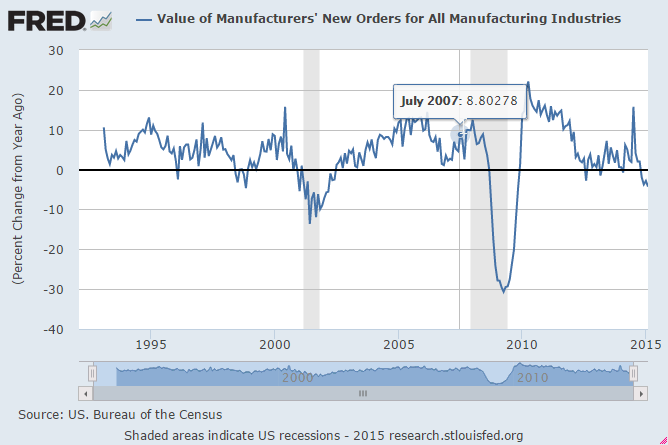The ECRI weekly leading index growth and SP500 change track each other as shown in the plot below.
Figure 1: Correlation between ECRI LEI and SP500
The correlation is good, nearly 80%. This is not a surprising given that
1. SP500 is a component of ECRI.
2. Stock market usually reacts to other components of ECRI. For example, higher unemployment claims indicates cooling economy which drives stocks prices lower.
What is surprising is that this correlation has been broken recently. Whereas the ECRI growth has been negative, the SP500 has been making new highs. Similar broken correlations are seen other historically reliable indicators such as credit spread and SP500.
There is combination of forces at play:
1. Investors are betting that current weak data is passing and will not affect longer term prospects of US economy.
2. We are in later stages of bull market where majority of investors are all in. By definition of all in, there are no sellers, just buyers, and price keeps going up.
3. Stocks bubble is being blown by the central bank narrative. In this narrative, fundamental analysis is not important and good news may actually be undesirable.
At the same time, the rally is running on fumes. As seen by the margin debt peaking (plot below), there is little fuel left for further rally. All that is needed for sell off is a slight change in psychology where minority of investors decides to hold cash rather than stocks yielding less than 2% dividends.
Figure 2: Margin debt has peaked and is in down trend.

















































